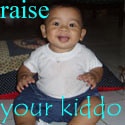Managers also often wear the high-anxiety hat. These tasks are performed without any joy and become a painful reminder of problems managers face. These are challenging tasks that test a manager’s competence to function when faced with critical decisions. They may not occur often but they define the manager’s character and involvement. Fortunately there are not too many. The following examples define the high-anxiety hat:
❑ Dealing with Harassment and Addiction.
There is no doubt that you will encounter problems regarding harassment and addiction of various types. You will most likely resolve such issues with interaction from the human resource and legal departments. These become serious matters because if the wrong perceptions persist careers can be destroyed. But your role is to ask the right questions. You cannot sit on the sidelines and leave the decision to the human resource and legal people. You must actively participate. You owe it to your employees. You don’t take sides. You demand that company politics not enter the discussion.
❑ Coping with the Death of an Employee or an Employee’s Close Relative. What would you do if one of your team died when on an assignment in another city? Could you approach the spouse or the parents and pass on the sad news? How would you approach the immediate family? You can’t just leave it up to the human resource people. This person worked with you; at the very least you have responsibility to be the messenger. You can’t pass the buck to some unknown person.
❑ Having the Courage to Discipline.
Most organizations have policies and procedures (P&P) related to employee disciplinary
action, and the fewer the better. Interpretation and implementation of those policies is left to the manager’s discretion.
Those P&P’s usually hinder freedom of operation. Managers need to determine the limits. But that takes a lot of courage. Disciplining for anything other than serious infractions is a waste of time and only destroys morale.
❑ Managing Nonperformers.
Managing nonperformers requires coaching and monitoring for improved performance.
They cannot do it all on their own. Maybe you hired this person as one of the best and brightest. You need to ask what happened. Did you have the courage to face up to the problem when it first became apparent?
❑ Having the Courage to Dismiss a Person.
At some time you will be forced to dismiss an employee. This is painful but necessary. As long as you have given an employee the opportunity to improve and it’s rejected there is no alternative. The major question is whether the employee has what it takes to perform effectively.
❑ Being a Constructive Maverick.
As a manager you’ll need to display some of those maverick characteristics—curiosity, tenacity, passion, and stick-to-itiveness. You’ll need to ask the questions most people fail to ask in order to determine the future of your group. Just think how many unpopular positions over the centuries have changed our way of thinking. We can begin with Copernicus, go on with Galileo, and list many other renegades of traditional thought. The new will always be suspect. Being the constructive maverick is not for everyone. It takes a lot of courage to go against the flow.
❑ Bootlegging Resources.
At 3M, one of the most innovative organizations in the world, the bootlegging of resources has been enshrined. Bootleg the resources you need to prove a principle or to explore what would never be officially sanctioned. You beg or borrow resources to prove a concept. This does not imply doing anything unethical or illegal. As a manager, you may not be able to sanction an action, but you can defend it if it becomes necessary. Your role as manager is to assist your colleagues in finding those resources.
❑ Admitting Mistakes.
Admitting mistakes is not the most pleasant task for any of us. But admit them when they happen. You can’t cover them up without severe consequences to your reputation. You’re going to make some mistakes and some of them may seem dumb to certain individuals. It takes courage to admit that you were wrong. Keep in mind that a mistake to one person may be a source of future opportunities for another person. Today’s mistake may be tomorrow’s innovation. Mistakes determine progress; learn from them.
They’re absolutely necessary.
Source : Gerard H Gaynor. 2004
 RSS Feed
RSS Feed Twitter
Twitter


![SEVEN MANAGEMENT HAT [5]](https://peoplewit.com/wp-content/plugins/wordpress-23-related-posts-plugin/static/thumbs/24.jpg)
![SEVEN MANAGEMENT HAT [4]](https://peoplewit.com/wp-content/plugins/wordpress-23-related-posts-plugin/static/thumbs/5.jpg)
![SEVEN MANAGEMENT HAT [3]](https://peoplewit.com/wp-content/plugins/wordpress-23-related-posts-plugin/static/thumbs/19.jpg)
 Posted in
Posted in  Tags:
Tags: 




